
AUTOMOTIVE TRENDS AND INFLUENCE ON OCCUPANT SAFETY
The electric vehicle (EV) market is growing rapidly, as major car manufacturers catch up to agile start-ups, such as Tesla, with their own EV offerings. Audi, Porsche, General Motors and Ford have all either announced or already produced brand new EVs within the last two years alone. Such a transition in the automotive industry is fuelling the EV market to reach an expected 21 mn vehicle sales in 2030 [1]. Improving battery technology and national incentives also contribute to an increase in sales.
Meanwhile, companies of all sizes and from many industries are engaged in the development of autonomous vehicles (AVs). Self-driving passenger cars will require several hundred-of-millions of lines of software code as well as hundreds of Electronic Control Units (ECUs), sensors and other electronic components. As a result, the emergence of the AV market is expected to drive growth in automotive electronics and embedded software.
At the same time, innovative vehicle architectures are being developed to manage complexity through consolidation and to optimise the implementation of electric powertrains, including batteries. These new architectures will enable new features and novel vehicle configurations, especially as human beings transition from drivers to passengers. Here, one area of critical concern is how these technologies will affect occupant safety, particularly in the event of a crash.
PASSENGER SAFETY IN THE ELECTRIC AND AUTONOMOUS AGE
This story is from the August 2020 edition of Auto Tech Review.
Start your 7-day Magzter GOLD free trial to access thousands of curated premium stories, and 8,500+ magazines and newspapers.
Already a subscriber ? Sign In
This story is from the August 2020 edition of Auto Tech Review.
Start your 7-day Magzter GOLD free trial to access thousands of curated premium stories, and 8,500+ magazines and newspapers.
Already a subscriber? Sign In

FUNCTIONAL SAFETY STANDARDS TOP PRIORITY FOR FUTURE AUTOMOTIVE DEPLOYMENT
Increasing levels of electronic content in vehicles result in a large amount of software that is required to run the scenes behind the mechanical aspects of a vehicle. Electronic systems in automobiles are part of every section, from the powertrain to comfort and convenience systems as well as all types of safety equipment. This makes electronics and the software running these systems a critical part of the equation for future mobility solutions. In addition, putting standards in place to measure methods of developing, testing and functioning of such electronic systems also becomes highly relevant.

SAFETY IN ELECTRIC AND AUTONOMOUS CARS – SIMULATION OF COMPLEX CRASH SCENARIOS
Electric and autonomous vehicles allow for novel seating arrangements and packaging strategies, presenting new safety challenges. Physical crash testing must be supplemented with virtual simulation to ensure vehicle safety on shorter development cycles. With its Simcenter Madymo MBS software, Siemens provides improved runtimes and the Active Human model, enabling accurate and rapid occupant safety analysis in complex crash scenarios.
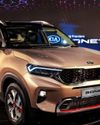
KIA SONET – A MIGHTY OFFERING IN THE COMPACT SUV SEGMENT
It wouldn't be wrong to say that Kia Motors India has taken the Indian market by storm in less than 12 months of its presence in the market.

2020 Honda City – More Refined, Plusher, Well-Equipped
For over two decades, the Honda City has remained one of India’s most favourite sedans.

Realising An All-Electric Future Over The Next Decade
A Greenpeace report early last year reported that a shocking 22 out of the world’s 30 most air-polluted cities are in India.
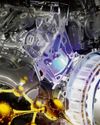
REQUIREMENTS FOR OPERATING MATERIALS APPLIED IN HYBRID POWERTRAINS
The fundamental change in the automotive industry from conventionally-powered vehicles to increasing electrification and fully electric powertrains is a challenge also for the development of operating materials. In this challenging environment, APL contributes with core expertise for internal combustion engines, as well as for hybrid electric vehicles in the areas of electric motors, power electronics and batteries, to support the evolution of alternative fuels and lubricants.
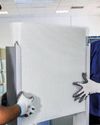
FREUDENBERG ENABLING CLEANER, CONNECTED INNOVATIONS ACROSS AUTO INDUSTRY
The Freudenberg Group is a large conglomerate comprising of numerous companies that it has acquired over the decades. In India, the group has been expanding organically with its innovative products and solutions. This report takes a look at the developments and innovations of the Freudenberg Group companies in India in pre COVID times. Barring SurTec, we spoke to representatives of Freudenberg NOK Sealing Technologies, Freudenberg Filtration Technologies, Klüber Lubrication + OKS and Corteco to provide an overview of Freudenberg’s role in the automotive context in India as well as the new innovations being developed across segments of the industry.
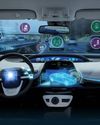
ADAS ROUNDTABLE DELIBERATES ON ROADMAP FOR INDIA
The Mathworks-powered virtual roundtable threw up insights about the challenges and opportunities associated with ADAS
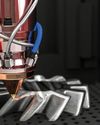
METAL 3D PRINTING DRIVING ENHANCED POSSIBILITIES OF ADDITIVE MANUFACTURING
The adage ‘change is the only constant’ holds true across all segments of life, including manufacturing.
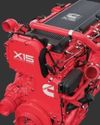
TULA DEVELOPING DYNAMIC SKIP FIRE TECHNOLOGY FOR ALL ENERGY SOURCES
Ever since its introduction to the market in 2019, Silicon Valley-based Tula Technology’s innovative cylinder deactivation technology, Dynamic Skip Fire, has found increasing acceptance in the North American market, with General Motors selling over half a million units featuring this proprietary technology. In its effort to further improve vehicle fuel efficiency and emissions, the company has now collaborated with global power leader Cummins on a significant technical demonstration of diesel Dynamic Skip Fire (dDSF). DSF as a technology, nonetheless, is not limited to petrol and diesel alone.